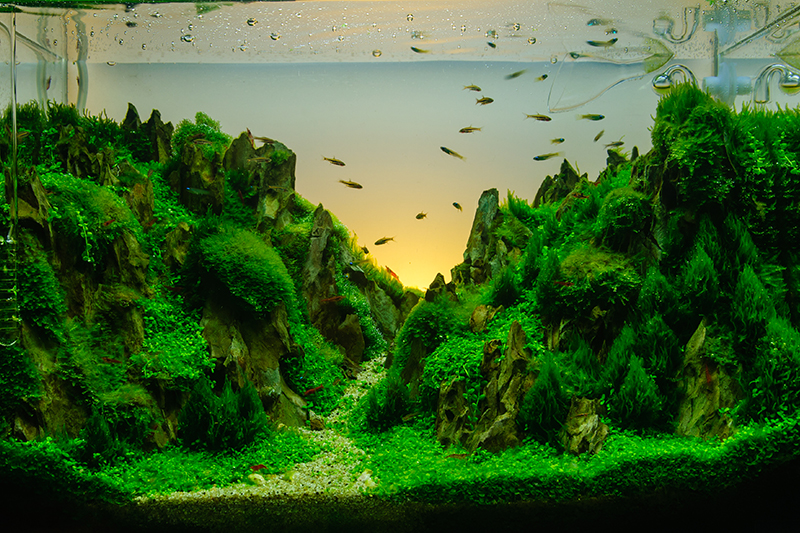Understanding the Light Needs of Anubias: A Comprehensive Guide for Aquatic Plant Enthusiasts
Anubias is a popular choice for aquarium enthusiasts due to its beautiful, lush green leaves and low maintenance requirements. However, in order to keep your Anubias healthy and thriving, it’s crucial to understand its light needs. In this comprehensive guide, we will explore the specific light requirements of Anubias and provide you with all the information you need to ensure the success of this aquatic plant in your aquarium.
Table of Contents
Understanding Anubias Light Requirements
Anubias plants are naturally found in the shady areas of tropical rainforests, which means they thrive in low to moderate light conditions. When it comes to aquarium lighting, it’s important to replicate these natural conditions as closely as possible in order to promote healthy growth and development of the plant.
One of the key factors to consider when it comes to Anubias light requirements is the intensity of the light. Anubias plants prefer low to moderate light levels, which means they should be placed in areas of the aquarium that are not directly exposed to strong lighting. Too much light can cause the leaves of the Anubias to become discolored and damaged, so it’s important to find the right balance.
Another important aspect of Anubias light requirements is the duration of light exposure. In their natural habitat, Anubias plants are accustomed to receiving around 8-10 hours of daylight. Therefore, it’s important to ensure that the aquarium light is on for the appropriate amount of time each day in order to mimic these natural light conditions.
Choosing the Right Light for Anubias
When it comes to selecting the right light for your Anubias, there are a few key factors to consider. First and foremost, it’s important to choose a light that provides low to moderate intensity, as mentioned earlier. LED lights are a popular choice for aquariums, as they are energy-efficient and can be easily adjusted to provide the right level of light for your Anubias plants.
Additionally, it’s a good idea to choose a light that has a timer function, as this will make it easier to regulate the duration of light exposure for your Anubias. By ensuring that the plant receives the right amount of light each day, you can help promote healthy growth and prevent any damage from excessive light exposure.
It’s also worth considering the color temperature of the light. Anubias plants tend to thrive under light with a color temperature of around 5000-7000K, which replicates the natural daylight conditions they are accustomed to. This can help promote healthy photosynthesis and overall growth of the plant.
Other Factors to Consider
In addition to light intensity and duration, there are a few other factors to consider when it comes to meeting the light requirements of Anubias. For example, it’s important to ensure that the light is distributed evenly throughout the aquarium, as this will ensure that all parts of the Anubias plant receive the light they need to thrive.
It’s also important to consider the placement of the Anubias within the aquarium. As these plants prefer low to moderate light levels, they should be placed in areas that are not directly exposed to strong lighting. This could be in shaded areas of the aquarium, or under the cover of larger plants or decorations.
Finally, it’s important to regularly monitor the condition of your Anubias plants in order to ensure they are receiving the right amount of light. If you notice any signs of discoloration, such as yellowing or browning of the leaves, this may be an indication that the plant is receiving too much light and needs to be moved to a more shaded area of the aquarium.
Conclusion
Understanding the specific light requirements of Anubias is essential for the successful care and maintenance of these beautiful aquatic plants. By providing the right level of light intensity, duration, and distribution, you can help promote healthy growth and prevent any damage from excessive light exposure. Choosing the right light and paying attention to other factors such as placement and monitoring will ensure that your Anubias plants thrive in your aquarium for years to come.
FAQs
Q: Can I use natural sunlight to meet the light requirements of Anubias?
A: While natural sunlight can be beneficial for Anubias plants, it’s important to ensure that they are not exposed to direct sunlight for prolonged periods, as this can cause damage to the leaves. It’s best to achieve the right balance by using artificial aquarium lighting that replicates natural light conditions.
Q: How can I tell if my Anubias is receiving the right amount of light?
A: One way to tell if your Anubias is receiving the right amount of light is to monitor the condition of the leaves. If they are thriving and a vibrant green color, it’s likely that the plant is receiving the right amount of light. If you notice any signs of discoloration or damage, it may be an indication that adjustments need to be made to the lighting conditions.
Q: What are the consequences of providing too much light for Anubias?
A: Providing too much light for Anubias can result in the leaves becoming discolored, damaged, or even burned. This can affect the overall health and appearance of the plant, so it’s important to ensure that the light conditions are appropriate for the specific light requirements of Anubias.
anubias light requirements
Anubias is a popular aquatic plant that is commonly found in freshwater aquariums. It is known for its unique appearance and ability to thrive in a variety of lighting conditions. However, in order to ensure the health and vitality of Anubias, it is important for aquarium enthusiasts to have a comprehensive understanding of its light needs.
Understanding the light needs of Anubias begins with knowing that it is a low to moderate light plant. This means that it can thrive in a wide range of lighting conditions, from low to moderate intensity. In low light conditions, Anubias will grow more slowly, while in moderate to high light conditions, it will grow more quickly. It is important to find the right balance of light intensity for Anubias to thrive.
One way to provide the appropriate lighting for Anubias is to use full spectrum LED lighting. This type of lighting is energy-efficient and offers a wide range of light intensity that can be adjusted to meet the specific needs of Anubias. Additionally, full spectrum LED lighting provides the necessary light spectrum for photosynthesis, which is essential for the growth and development of Anubias.
Another important consideration for Anubias’ light needs is the duration of light exposure. Anubias requires a photoperiod of 8-10 hours of light per day. It is important to provide a consistent light schedule for Anubias to ensure optimal growth and health. Additionally, a timer can be used to automate the lighting schedule and ensure that Anubias receives the appropriate amount of light each day.
In addition to light intensity and duration, it is also important to consider the placement of Anubias in the aquarium. Anubias should be positioned in areas of the tank that receive indirect or diffused lighting, as opposed to direct sunlight. This will help to prevent the plant from being exposed to excessive light, which can lead to algae growth and damage to the plant’s leaves.
It is also important to note that Anubias is sensitive to changes in lighting conditions. Sudden changes in light intensity or duration can cause stress to the plant and lead to a decline in its health. It is important to make any changes to the lighting gradually and monitor the plant’s response to ensure that it is able to adapt and thrive.
In conclusion, understanding the light needs of Anubias is essential for aquarium enthusiasts who want to cultivate this unique and beautiful plant. By providing the appropriate light intensity, duration, and placement, Anubias can thrive and enhance the aesthetic appeal of any freshwater aquarium. With the proper care and attention to its light needs, Anubias can provide years of enjoyment for aquatic plant enthusiasts. anubias light requirements









